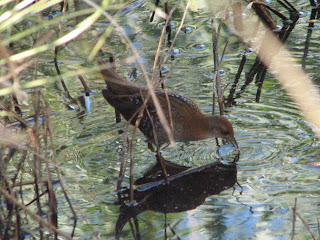CRAKES ON PASSAGE IN BRAZO DEL ESTE, SEVILLA, SW SPAIN
From late February but specially in March an April crakes occur in this natural park close to Sevilla city and just in the area of Doñana. A very transformed area into rice paddies and other crops but still with natural wetlands inside the farmlands. In the eastern margin of the river Guadalquivir. In fact, it´s the only place in many kilometers with natural habitats in the left margin of the old delta.
three views of Brazo del Este, Sevilla, SW Spain
Trapping sessions for ringing are been carrying out by the author. The first results encourage to keep on the investigation about these species although large patience is needed.
Spotted crake 11 March 2016
Spotted crake 1 April 2016
Kind regards from Sevilla. J. David
La migración de polluelas en la zona del Brazo del Este, espacio natural al sur de Sevilla, única zona con habitats naturales en muchos kilómetros de la margen izquierda del río Gudalquivir, es especialmente visible en Marzo y Abril. Se están llevando a cabo jornadas de trampeo por parte del autor que arrojan los primeros resultados. Se muestran dos fotos de la primeras polluelas pintojas capturadas para anillamiento. Saludos desde Sevilla. J. David.












